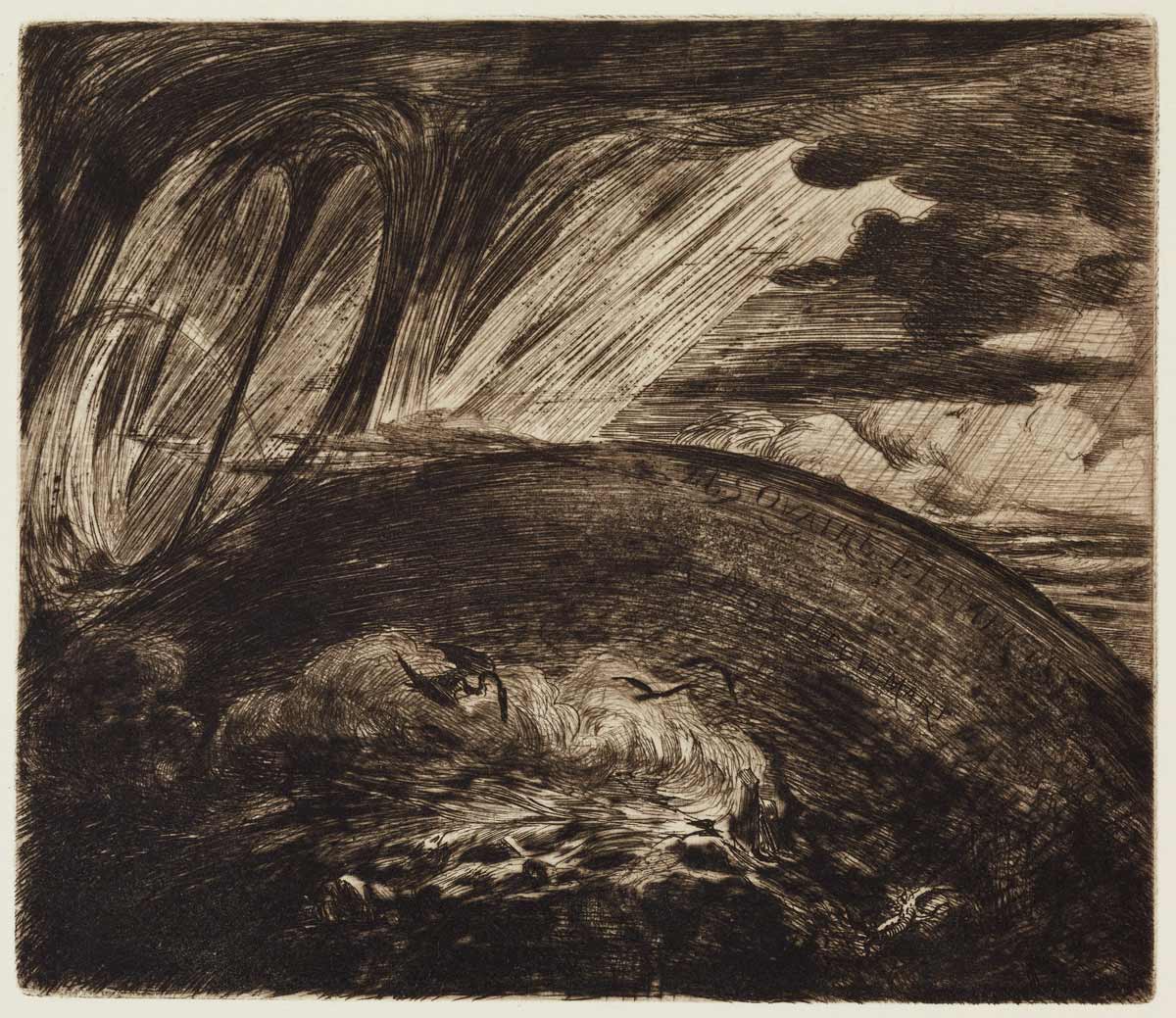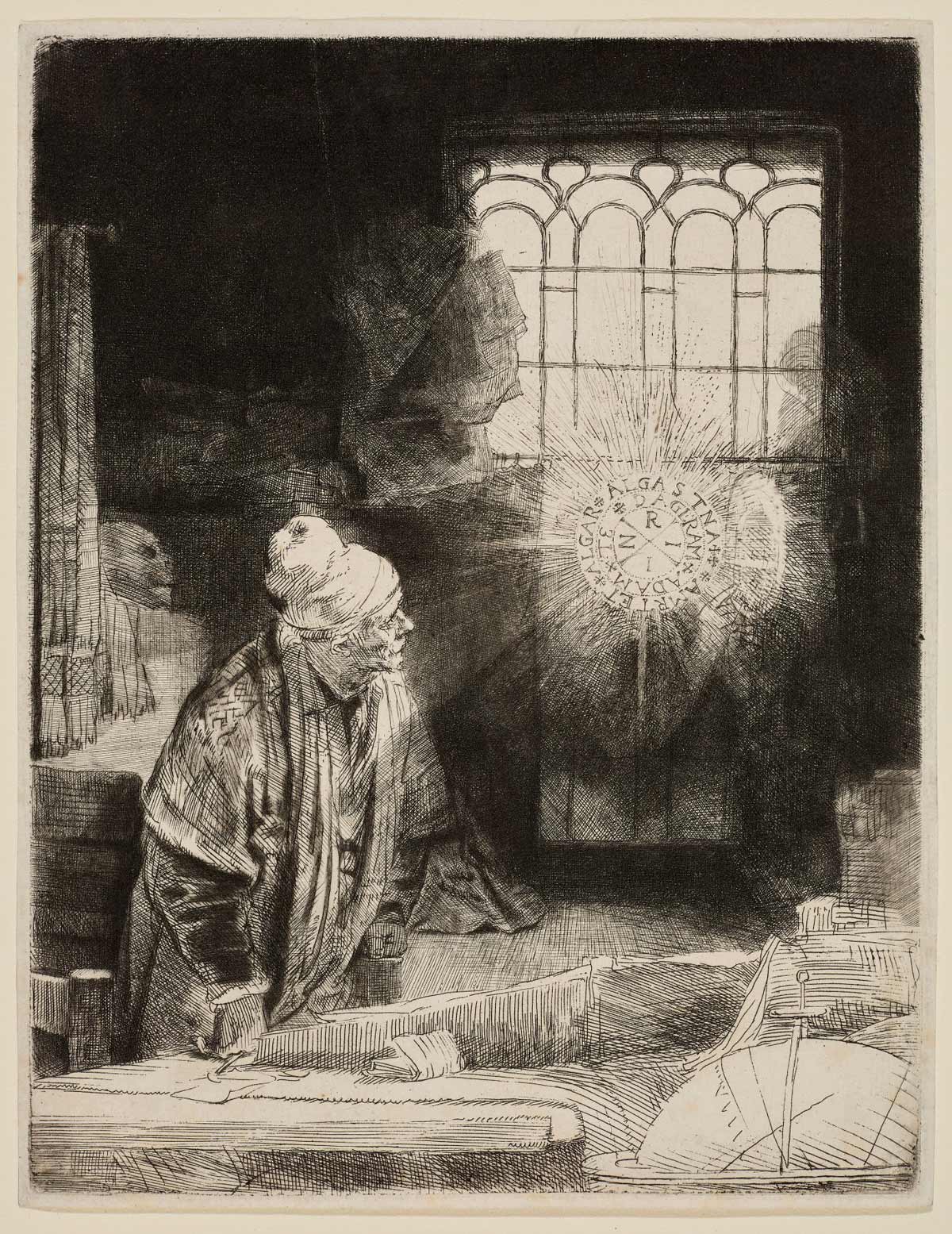In the Dark: European Prints, 1600–1910
European Art Galleries, Level 2, Gallery S202
Artists have explored many facets of darkness over the centuries using the rich black-and-white contrasts central to printmaking. Some have depicted physical spaces like nocturnal landscapes and dimly lit rooms. Others have adopted the dark as a metaphor for despair or grief. In many of the works you will see on view, darkness contains the possibility of creation: it represents primordial states from which life emerges, and quiet moments pierced by spiritual revelation, artistic inspiration, or dreams.
In the Dark features 20 prints from between the early 1600s and the early 1900s by artists including Paul Gauguin, Francisco de Goya, Käthe Kollwitz, and Rembrandt van Rijn; all are drawn from the Museum’s collection. Together, the works provide an opportunity to reflect on the generative potential of darkness during some of the shortest days in Wisconsin.
- Jules Ferdinand Jacquemart, Chaos (Le Chaos), from The Four Elements (Les Quatre éléments), 1863. Purchase, with funds from Print Forum, M2017.89.2. Photo by John R. Glembin
- Rembrandt van Rijn (Dutch, 1606–1669), Faust, ca. 1652. Etching, drypoint, and engraving. Gertrude Nunnemacher Schuchardt Collection, presented by William H. Schuchardt, M1924.153. Photo by John R. Glembin


